The Definitive Audio Technica AT2020 Review
The budget studio mic used by Billie Eilish to record Ocean Eyes
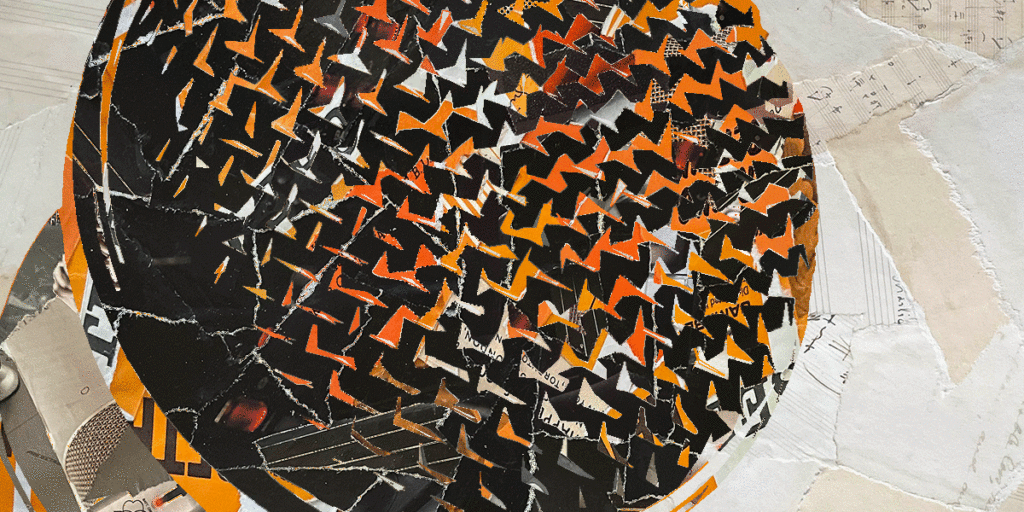
Reviewed by: Paul Narang
Review date: July 2023
Current price: Under $100
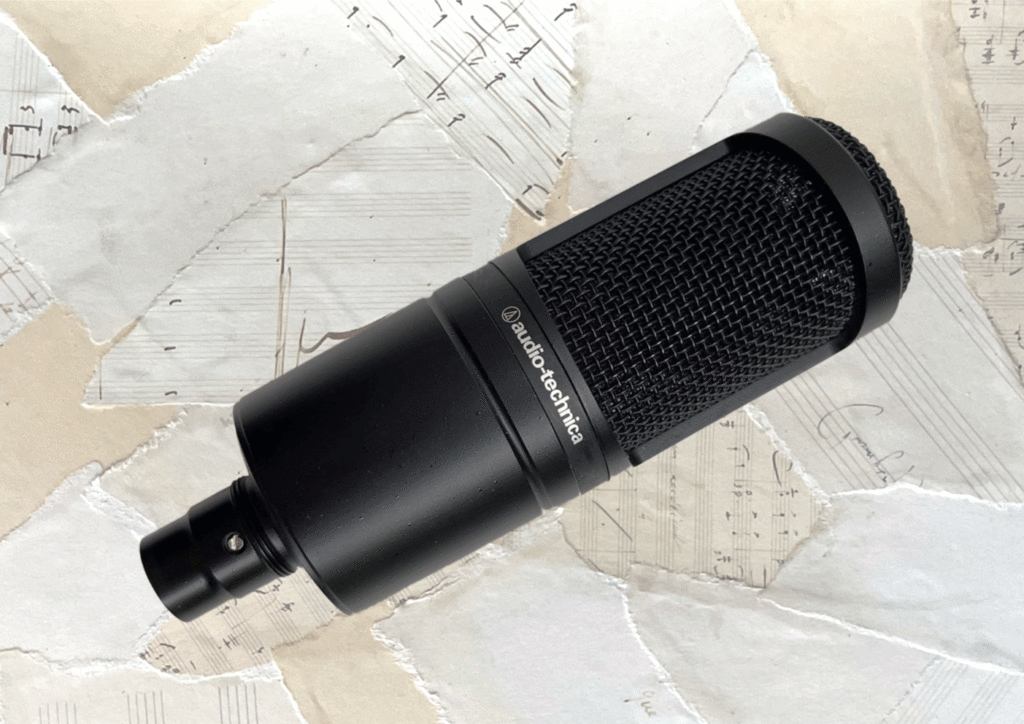

Audio Technica AT2020 Review
| Pros: | Cons: |
| Very affordable Sturdy and durable Great sound for the price | Sensitive to plosives Inferior noise isolation and self noise No shock mount |
Audio Technica AT2020 Review
The Audio Technica AT2020 is a budget conscious cardioid condenser microphone. Designed for the home recording market, the AT2020 offers a simple stripped back design with durable build quality. It has a wide frequency range, and sounds surprising clear and detailed. Used by Billie Eilish to record the vocals for ‘Ocean Eyes’, it’s a great beginners choice for musicians and vocalists.
What is it?
Established in 1962, Audio Technica is a Japanese audio equipment manufacturer. Originally known for phonograph cartridges and microcassette recorders, they began introducing condenser microphones during the mid 1990s.
In 2004 Audio Technica launched the AT2020, a budget condenser microphone with a fixed cardioid polar pattern. Retailing for under $100, the AT2020 is aimed at producers and musicians taking their first steps into the world of home recording.
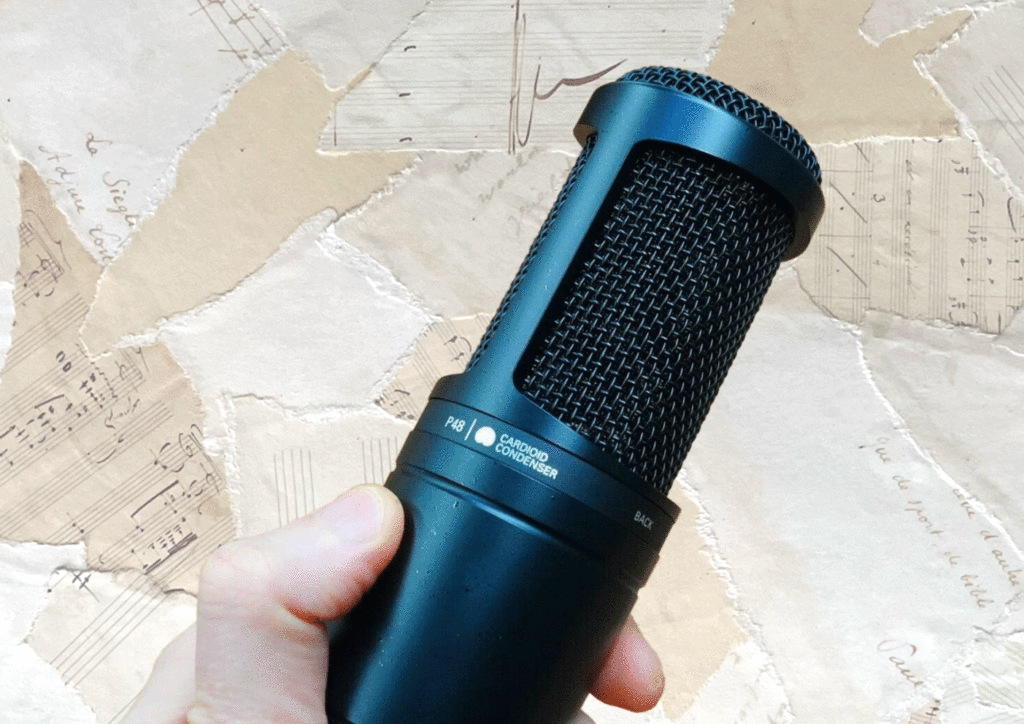
The AT2020 takes a pared back approach to design, offering only the most essential features. You won’t find any filter switches or pre-attenuation pads, and it doesn’t ship with a windscreen, pop filter or shock mount. But what you do get is a reliable, durable mic with a clear and detailed sound.
The cardioid polar pattern does a good job of rejecting noise, particularly from the rear of the microphone. This is certainly helpful if you don’t have a completely quiet room to record in. The maximum SPL rating of 144db is also a great feature, allowing you to capture drums, horns and the loudest of singers.
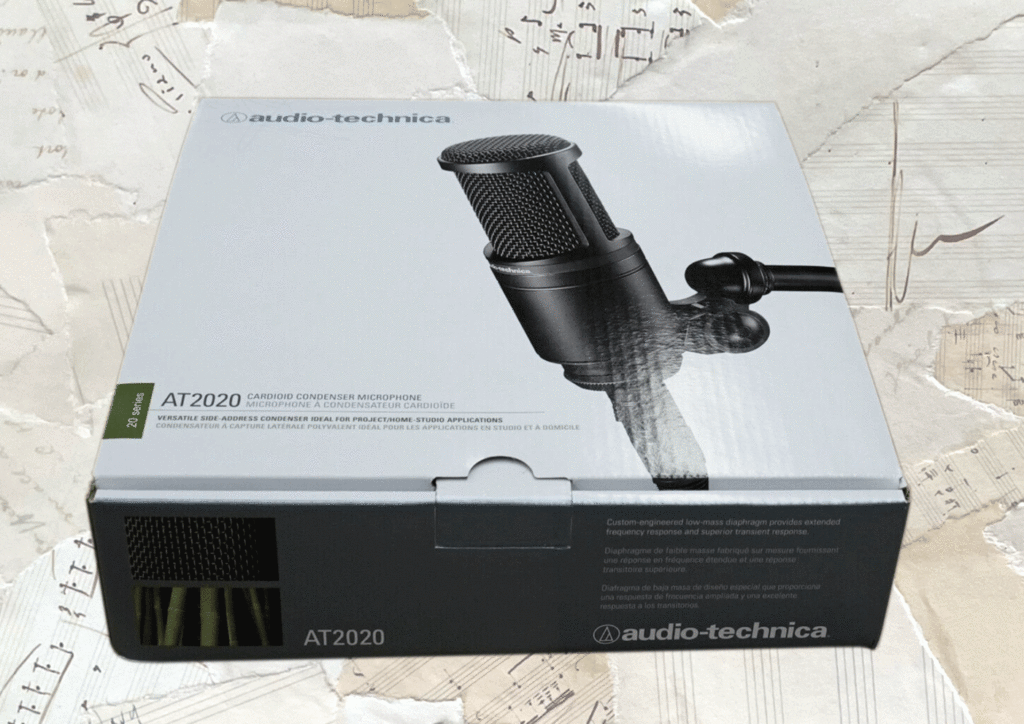
In the box
As well as the microphone, the AT2020 ships with:
- A mount for attaching the microphone to a mic stand
- A padded carrying case
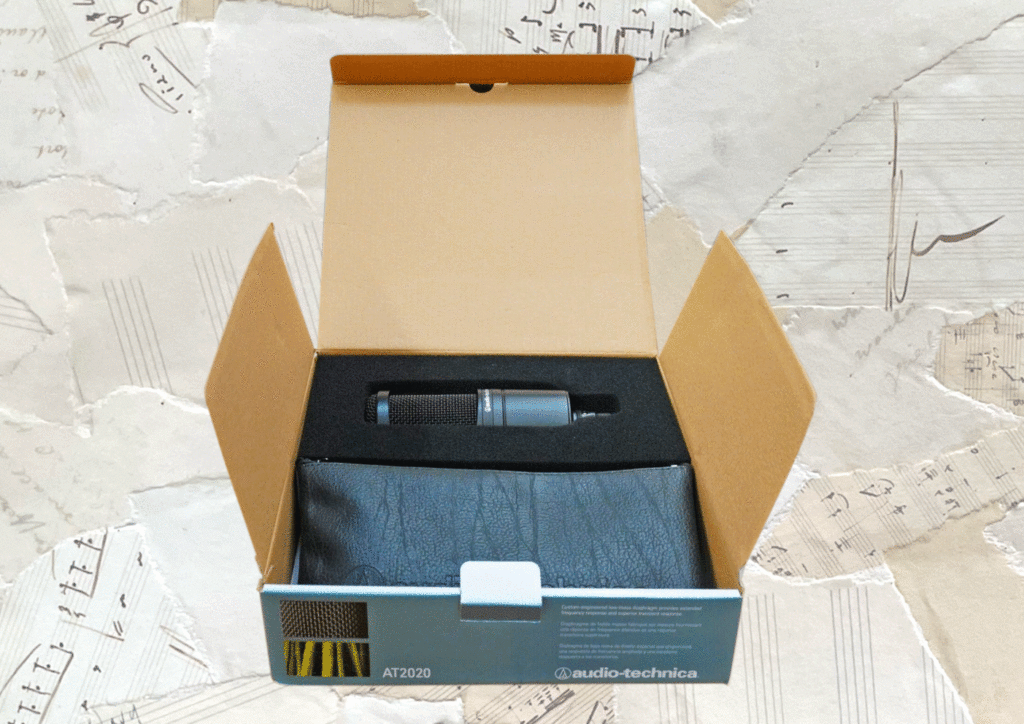
AT2020 Polar pattern
The Audio Technica AT2020 has a fixed cardioid pickup pattern, which forms a heart shaped area in front of the mic. It works as you’d expect a mic to work – picking up most of the sound from the front, but far less from the back and sides.

The cardioid pattern is a great choice for home studios where there hasn’t been much acoustic treatment. It will pick up the sound of the vocalist or instrumentalist in front of the mic, while rejecting the sound of the room.
AT2020 pick up pattern at different frequencies
Take a look at the diagram below to see how the cardioid pattern changes on the AT2020, depending on the frequency of the sound being recorded. Note that the heart shape is most heart-like in the midrange, at around 1 kHz, and at 5 kHz, picks up a little more from the back of the mic.
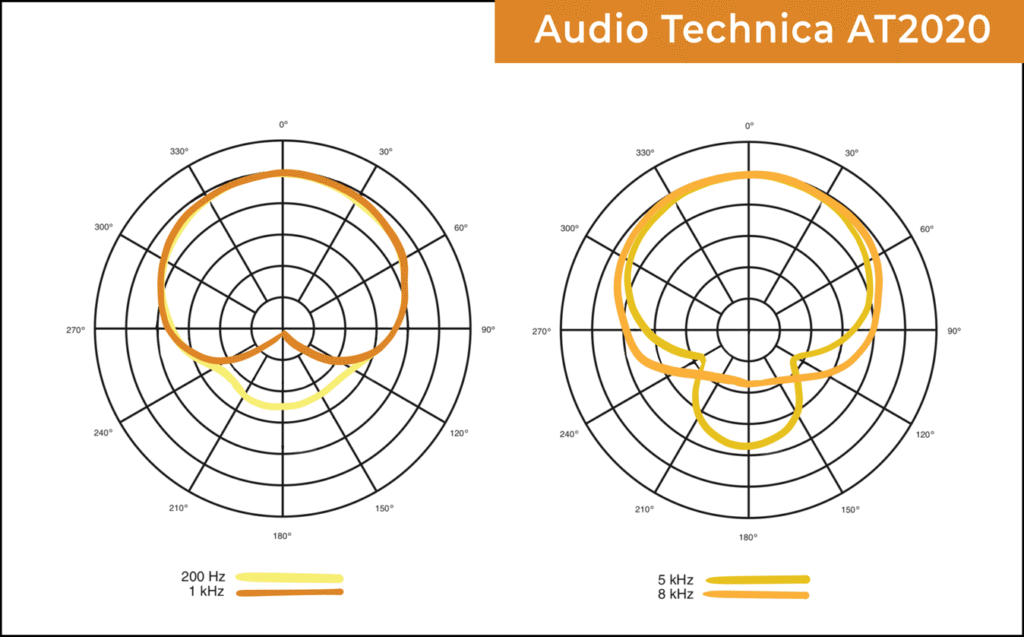
Phantom power for the AKG C214?
As a condenser microphone, the AT2020 will need phantom power. Phantom power is low voltage current sent to the microphone from a microphone preamp, mixing desk, or audio interface, sent through the XLR cable to the microphone.
If your audio interface or mixer doesn’t provide phantom power, there is another solution: connect your mic to an external 48 volt phantom supply. Then connect the output of the phantom supply to the mixer, or audio interface.
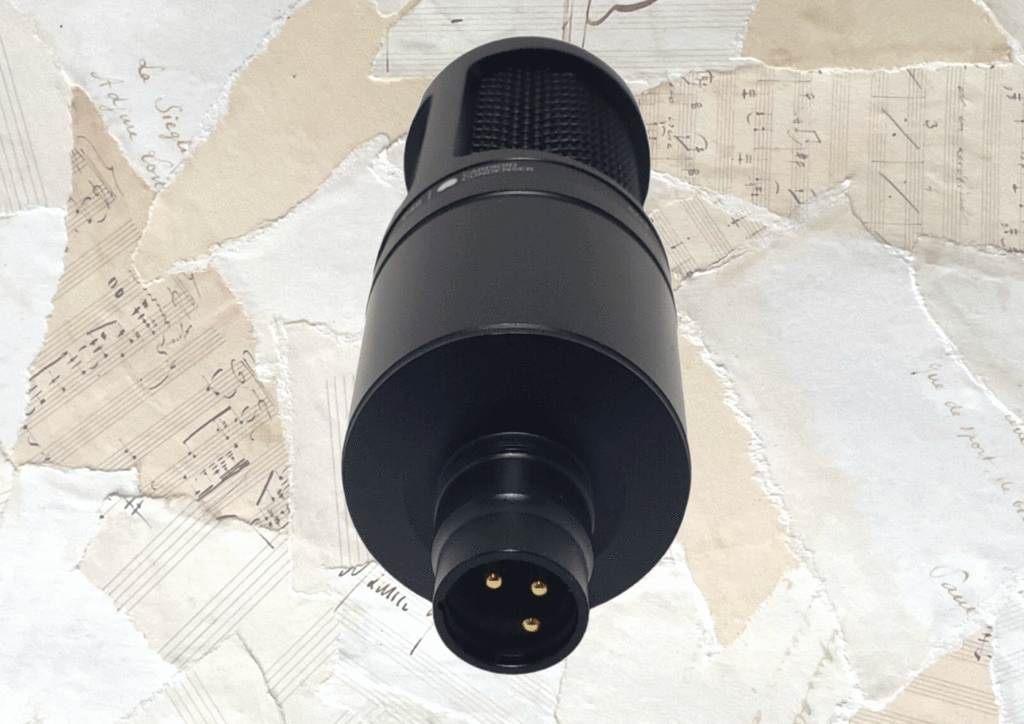
Connecting the AT2020
The AT2020 uses an XLR cable to connect directly to the audio interface or mixer. XLR is the standard connector for professional studio equipment. An XLR connector is ‘balanced’, which means the cable is shielded from interference and carries a higher signal than unbalanced cables.
XLR cables are the only cables capable of carrying phantom power to the mic.
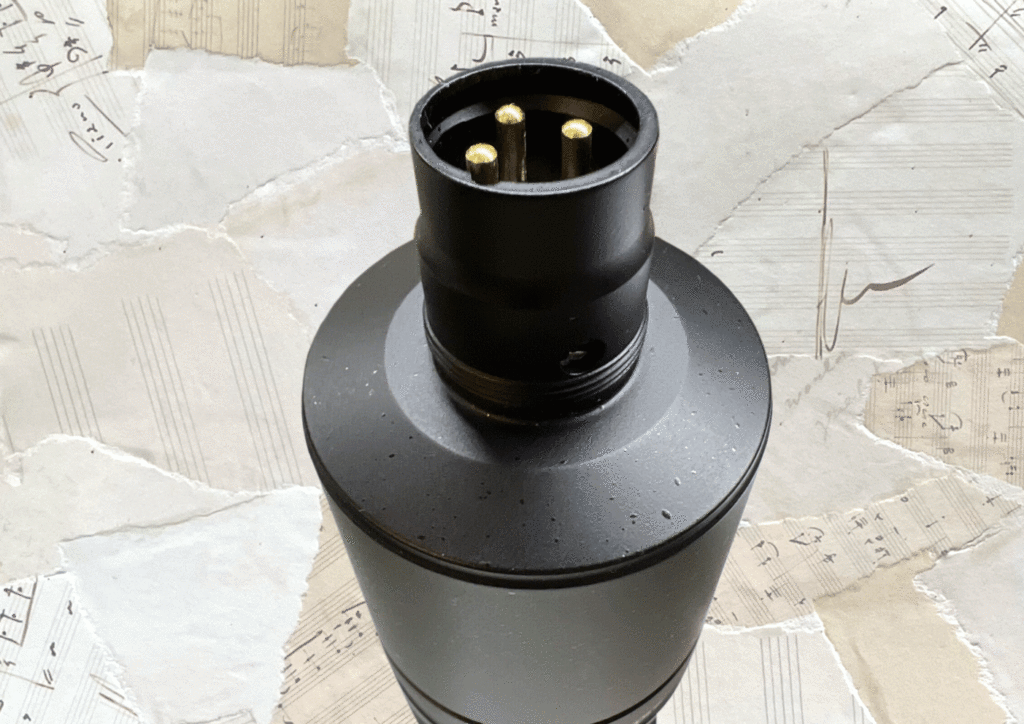
XLR connection on the Audio Technica AT2020
The Audio Technica AT2020 Design and Build
Considering the budget price point, I have to admit I wasn’t expecting the most durable of mics. But I was surprised – this is an extremely durable mic. Rather than plastic, it has an all metal body which will help keep the circuitry inside protected. At the top end, the capsule is protected with a strong metal grille. I tried pressing it, and there was very little movement. When I held it in my hand it had a nice weight to it, not too heavy, not too light.
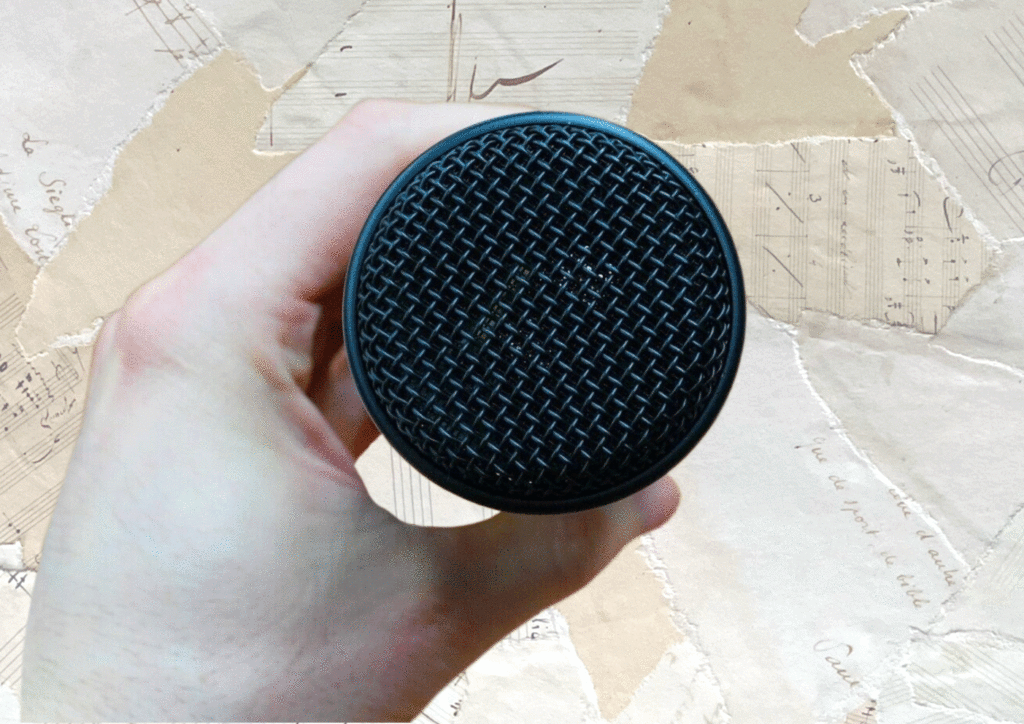
Inside, the AT2020 has a diaphragm of just 16mm in diameter, slightly smaller than a standard large diaphragm condenser. It contains a back-electret capsule, which is one of two possible types of condenser capsule. Although newer than the more traditional ‘true-capacitor’ capsules, back-electret technology has come a long way in recent decades. This type of microphone is truly capable of produce a fantastic sound.
When it comes to features, the Audio Technica AT2020 takes a minimal approach to stay within budget. There’s no switches for pre-attenuation pads or filters, such as low cut. If you do need to boost the presence or strip out a bit of low-end from your recording, this can always be achieved in post-production with some EQ.
AT2020 Dimensions and Weight
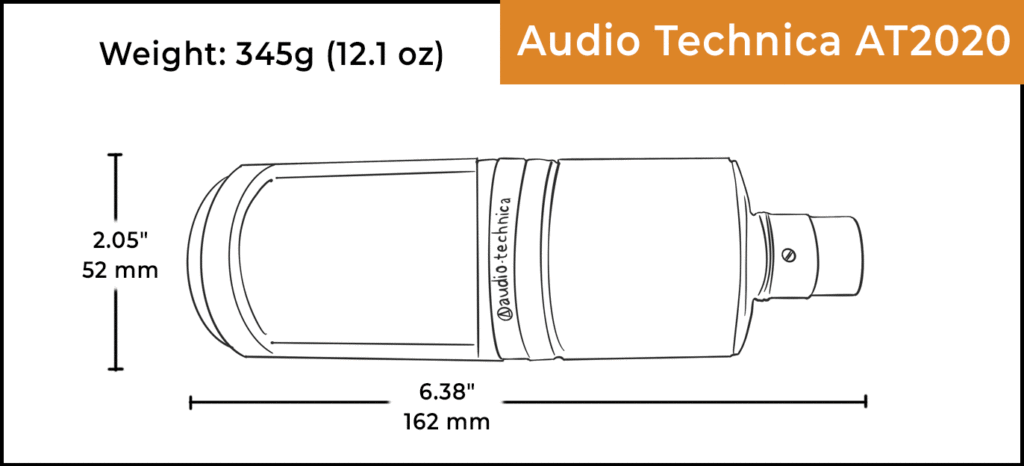
For me, the AT2020 has a very satisfying size and weight to it. The design of the microphone is not quite as tall as some other studio condensers, which makes it nice and compact in the hand.
The weight is good too – despite the metal housing, it’s a little lighter than some other studio condensers. THere’s some advantages to this – as well as being convenient for travel, it’s also light enough to put at the end of a long boom arm without causing it to droop.
- Dimensions: 162mm (2.05″) x 52mm (6.38″)
- Weight: 345 g
Audio Technica AT2020 frequency response
One area that impressed me with the AT2020 is the frequency response. It spans from 20Hz to 20kHz, which is impressive for a budget microphone – wide enough to cover the full range of human hearing. The response is fairly flat through the midrange between about 200Hz and 5kHz, helping to produce a smooth and balanced sound, especially on vocals.
As you’ll see from the frequency chart, the low-end response of the AT2020 doesn’t ‘roll off’ towards the lowest frequencies quite as much as you might expect. An advantage of this is that the AT2020 is good for capturing the low end of instruments.
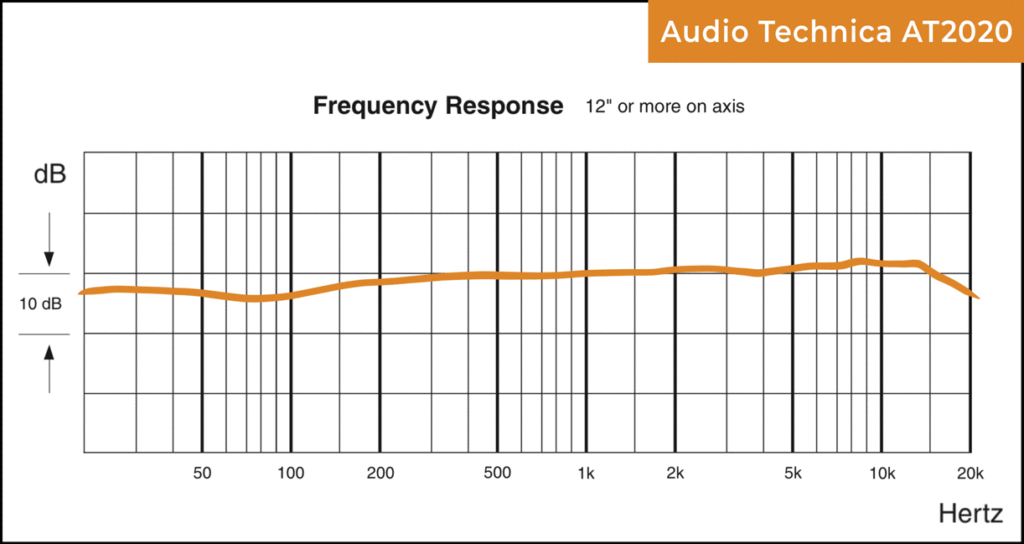
But if you’re a singer or vocalists this could make the AT2020 quite sensitive to the proximity effect. I did try this, and can say, in practice I didn’t find the low-end of the mic to be too pronounced or overstated. Remember – you can control the bass response by moving towards or away from the mic as you sing.
Towards the upper end of the frequency range, there’s a small boost between 5 – 15kHz, which adds some lovely air and sparkle to the sound. I found this to be great for vocals and acoustic guitar, which benefit from a gentle presence lift.
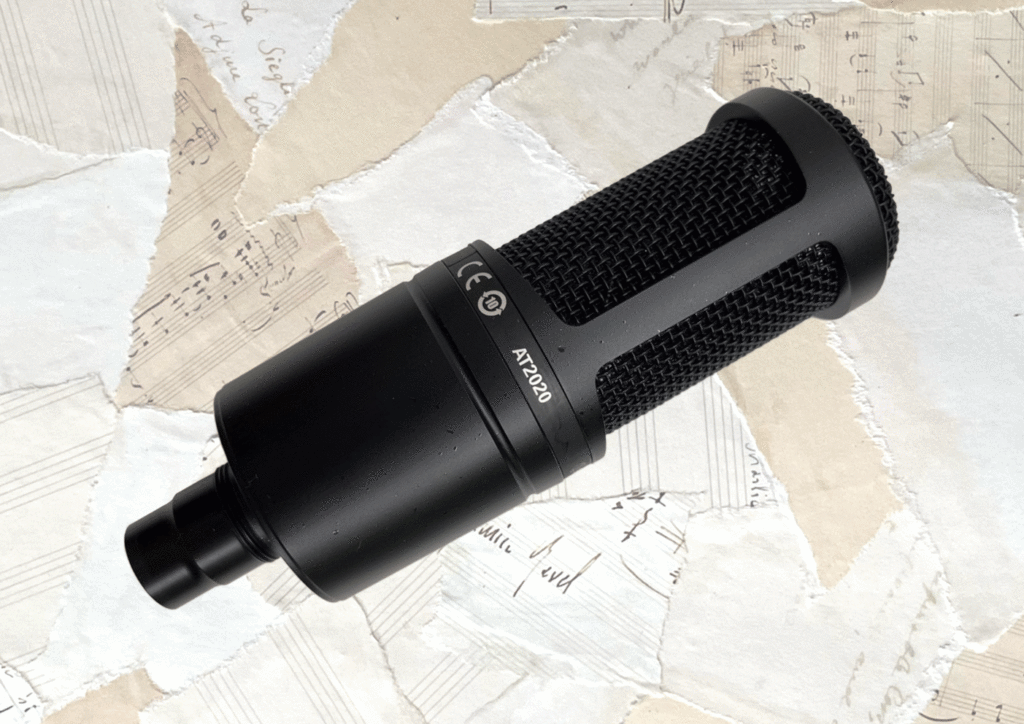
I compared the AT2020 with my AKG C414 – t’s clearly an unfair comparison as they’re in opposing price bracket leagues. But I found that whilst the AT2020 couldn’t replicate the smooth controlled high range of the C414, it still managed to achieve a nice clear bright tone, without being too harsh.
AT2020 Sensitivity and Impedance
The Audio Technica AT2020 has a sensitivity rating of -37 dBV/Pa. More sensitive microphones have a higher dBV/PA rating, meaning they need less gain to bring the signal up to a line level output. Active condenser microphones usually range between -42 and -30 dBV/Pa.
Although the AT2020 is a sensitive mic, its sensitivity rating is not as high as some of the other studio condensers. There’s pros and cons to having a sensitive microphone:
High sensitivity vs low sensitivity mics
Highly sensitive microphones are able to pick up a lot of detail, and capture sounds from quieter sound sources. These mics are often used to make more ambient room recordings in jazz and classical music. They can also be great for capturing the fine detail of a vocal or instrumental performance in the studio.
The downside is that they’ll also pick up a lot of ambient detail So as well the fines nuances of your vocals, there may be some background noise or room reflections. This isn’t a problem if you’re recording in a well-isolated, acoustically treated studio space. But for most of us, who record at home, this simply isn’t possible.
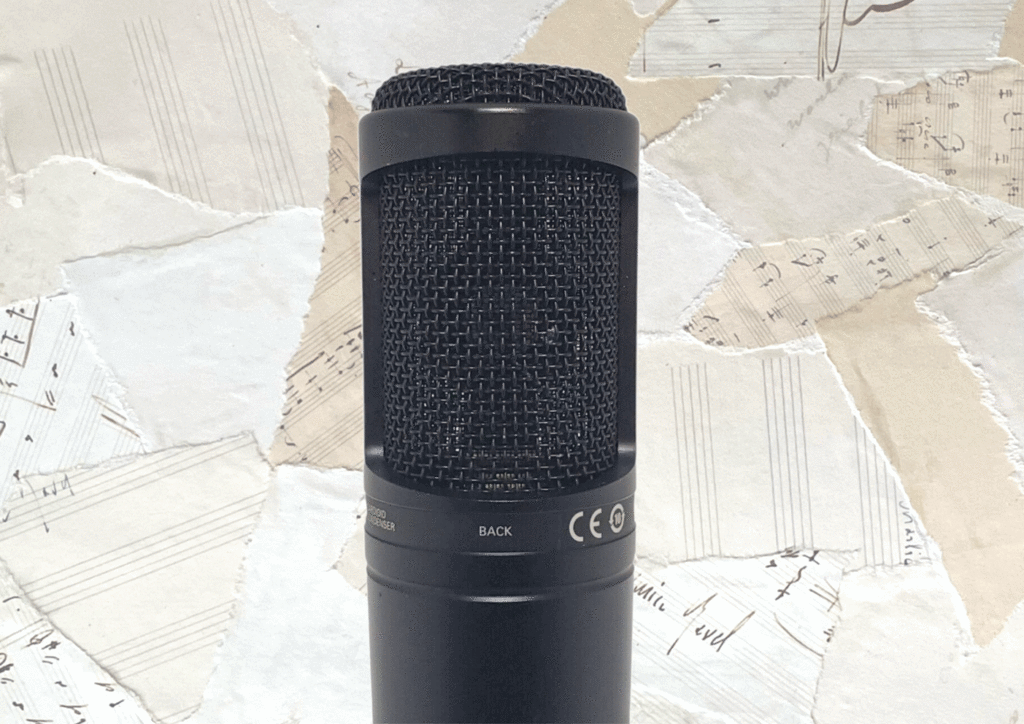
The Audio Technica AT2020 strikes a good balance between these two ends of the scale. It’s a medium sensitivity condenser mic, picking up plenty of nuance and detail, without much sound from the room.
The Audio Technica AT2020 impedance level
The AT2020 has a low impedance level of 100 ohms. This is a low impedance level, a common feature of studio condenser microphones. This allows the audio signal to run through long lengths of cable, without any degradation to the signal quality. Using the AT2020 with a balanced XLR cable can also help to ensure a clean signal.

Audio Technica AT2020 Sound Quality
Considering the price of the AT2020, I was impressed with the sound, which has all the detail you’d expect from a condenser microphone. The midrange is smooth, and the top end is bright. With such a bright sounding mic, it’s about matching it to a singer or instrument which sounds better recorded with more top end. An already overly bright or harsh sound source will likely sound worse through the AT2020.
I found the presence boost at the top end brought out detail, adding a lovely shimmer on acoustic guitar, both nylon and steel. I think it’s a matter of personal taste and how you use it, but I found the AT2020 to be airy without being too harsh, handling vocal sibilance admirably. When I tested the AT2020 on tambourine, the litmus test for high-frequencies, it was perfect.
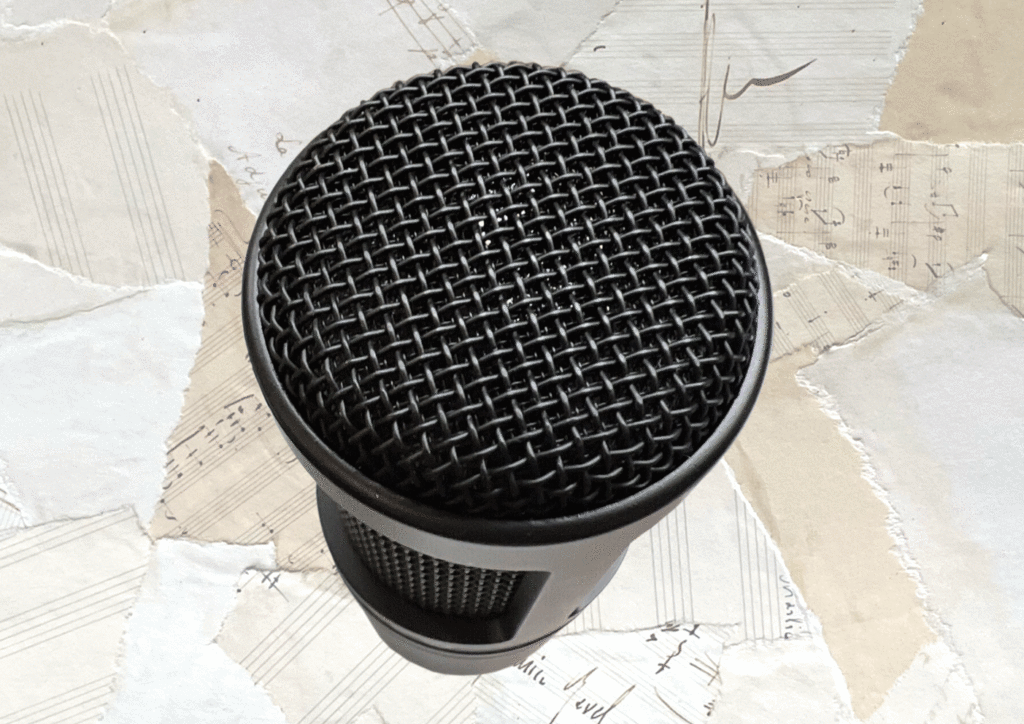
The bright top end is balanced out with a fairly flat mid-range. This added a warm quality and a bit of body to both female and male vocals. It also preserved the natural tone of instruments, without introducing too much colour.
We should bear in mind that this is a low-budget microphone aimed at an entry-level home studio market. My earlier comparison with the AKG C414 was totally unfair! But given just how affordable this mic is, I couldn’t help but be impressed with the clear and authentic sound.
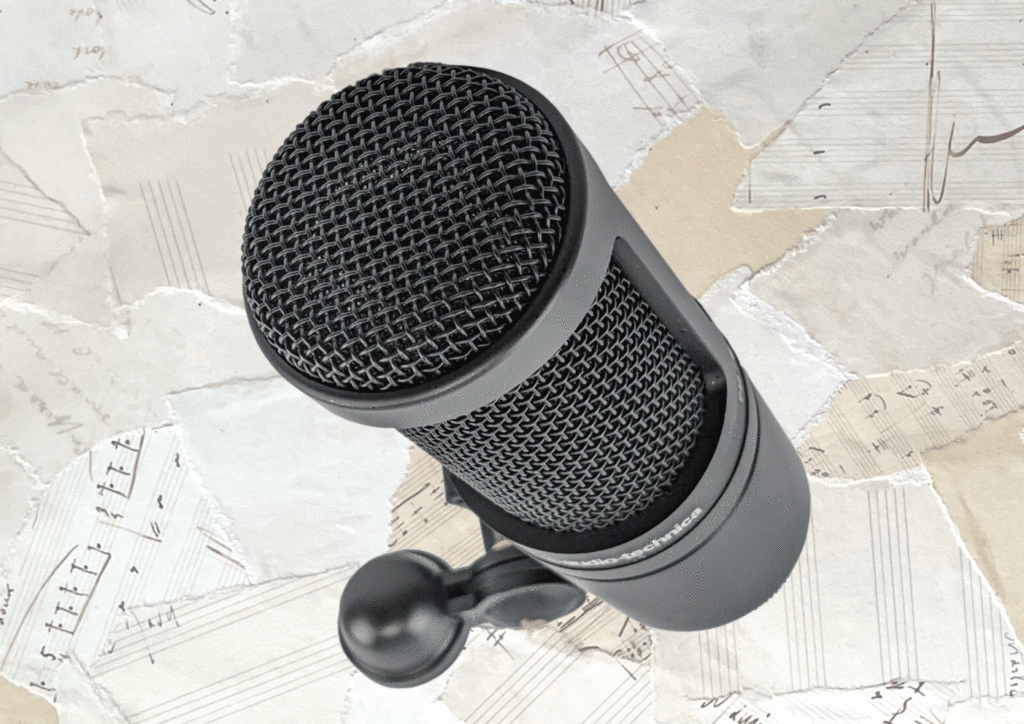
I found that the AT2020 had a degree of ‘self noise’ – that’s the noise generated by its own mechanics. It’s not loud, just 20 dBa, but it means I wouldn’t use the AT2020 for ambient recordings of distant sound, or close up, low volume ASMR recording. But I didn’t find it a problem for close miking the vocals and instruments I tested.
The Audio Technica AT2020 is certainly a versatile mic for the home studio. It works well on a range of voices, both on vocals and spoken word. But it can also be used with a wide range of instruments, and especially acoustic guitar, with careful mic placement and EQ. The high SPL is a major bonus – perfect for the loudest instruments – drum kits, brass and heavy metal singers!
AT2020 in the recording studio
By stripping the AT2020 to the bare essentials, Audio Technica have been able to offer clear, usable studio sound at a very affordable price. However, I found the minimal approach does have implications for how I used the microphone in the studio.
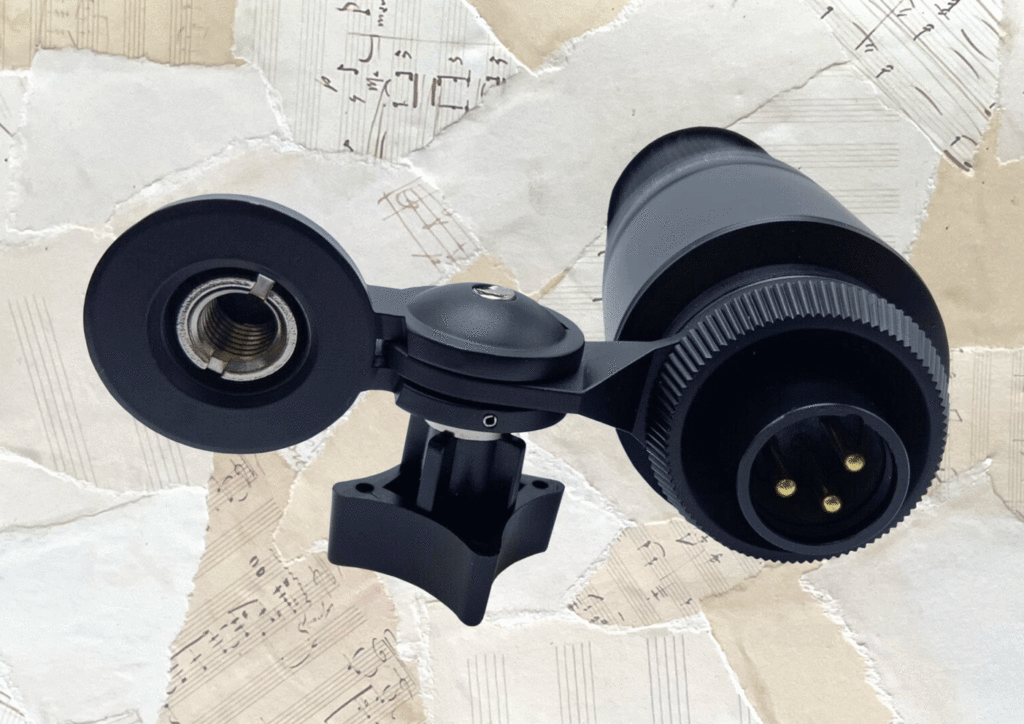
I tested the Audio Technic AT2020 on a stand, using the provided stand mount. I tested in a quiet, acoustically controlled room, so it wasn’t bad, but if you’re in a place where a truck might pass by, or your neighbour decides to turn the washing machine on, there’s the danger of ruining that perfect vocal take. To address this, I’d strongly recommend purchasing an external shock mount.
Similarly, one of the weaknesses of the AT2020 is its sensitivity to plosives – those pops, clicks and other mouth sounds that can ruin a recording. I’d recommend buying an inexpensive pop filter which you can attach to the microphone stand.
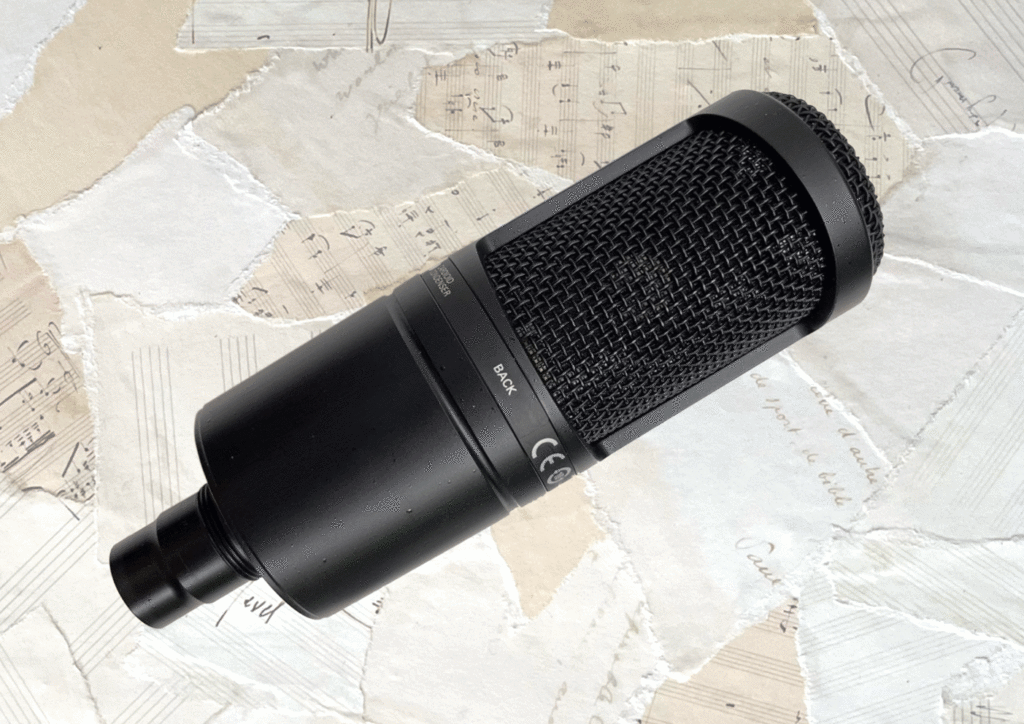
As expected, I found the cardioid polar pattern of the AT2020 did a good job of rejecting sound from the sides of the microphone. It was also very good at rejecting sounds from the rear, which might be helpful for you if your recording environment is compromised.
Condenser vs dynamic microphone
The two most common types of microphones are dynamic microphones (like the Shure SM58 reviewed here) and condenser microphones like the AT2020. These two types of mics each have pros and cons and both are useful in different ways.
Dynamic microphones
The mechanism inside a dynamic microphone is more durable and sturdy than a condenser, making them ideal for live gigs. They’re also less likely to be damaged during the rough and tumble of touring life. Dynamic mics are generally less sensitive than condenser microphones, and better at rejecting background noise and feedback. But the lack of sensitivity means they aren’t capable of reproducing as much nuance or dynamic detail, especially in the higher frequencies.
Condenser microphones
By contrast, condenser microphones have quite a delicate mechanism, so you’ll need to take good care of them. They’re able to record with greater detail and clarity than dynamic mics, often with a bright and sparkly top end. This is often just what you need for studio recordings, which is where you’ll find the majority of condenser mics.
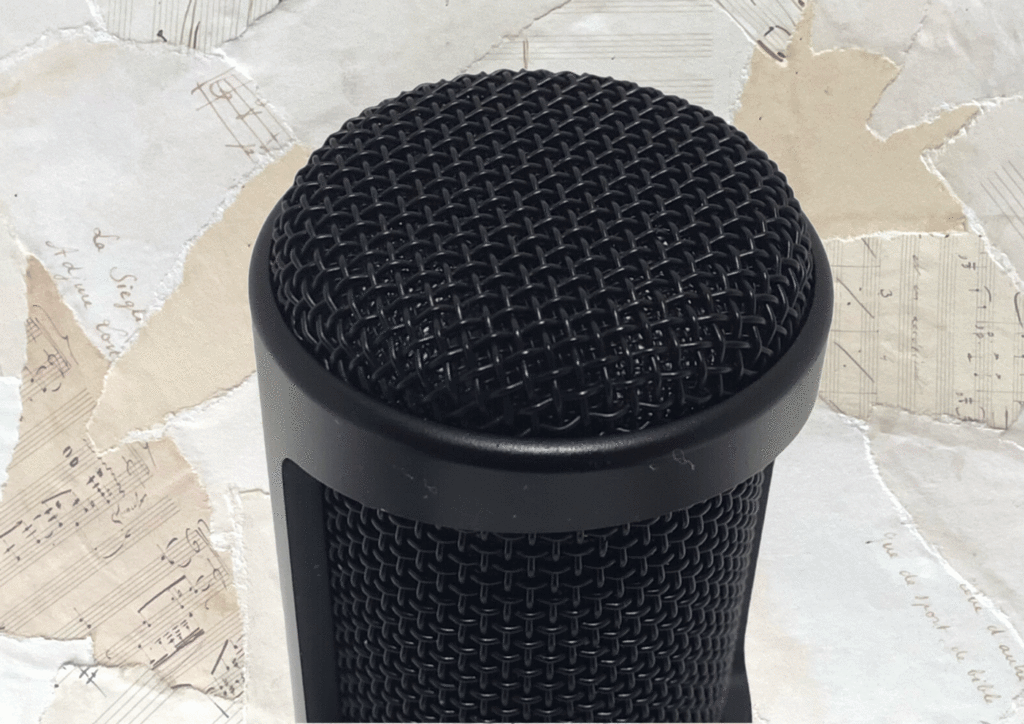
As the Audio Technica AT2020 is a (small diaphragm) condenser microphone, its better suited to producing clear and detailed recordings in the studio than a similarly priced dynamic microphone.
Audio Technica AT2020 vs AT2035
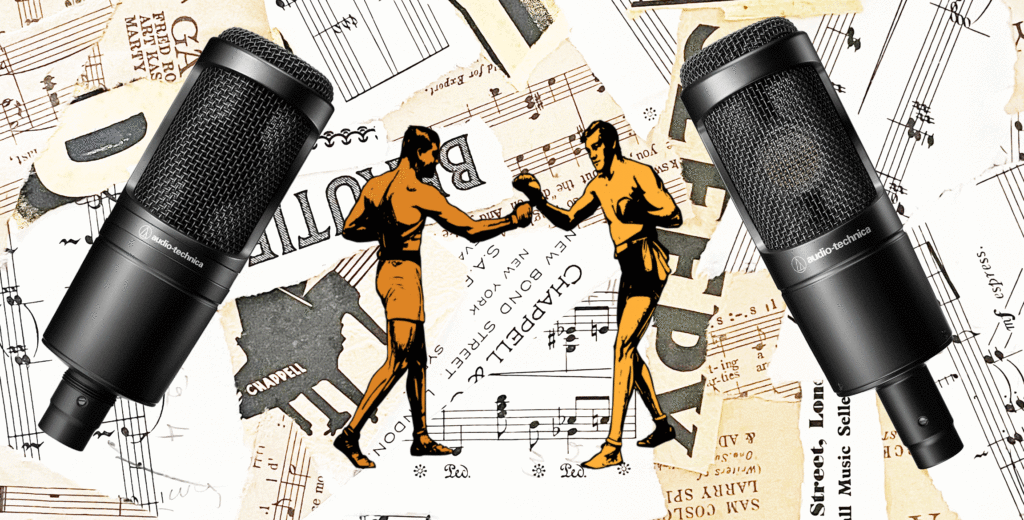
The AT2020, and its larger sibling, the Audio Technica AT2035, have quite a few similarities. They share the same distinctive design and build quality, the same frequency range, and are both budget cardioid condensers.
However, the AT2035 does have some distinct improvements – its slightly more sensitive, and has a quieter self noise (12db vs 20db). This means that you’ll be able to capture quieter sound sources or more subtle performances. It also has a higher SPL of 149db vs 144db, giving it a bit more flexibility when it comes to louder instruments.
The frequency responses are similar, but there are subtle differences. The AT2035 has a flatter and smoother midrange when compared to the AT2020, along with a touch more presence at the top. This adds up to a warmer, more detailed sound than the AT2020.
The AT2035 also has the addition of some very useful features. There’s a low cut filter at around 80Hz which can help counteract the proximity effect, and a -10db pad which will come in handy if you’re recording drums or horns. Most importantly, it also ships with a shock mount which will eliminate those irritating stand noises and vibrations.
Though more expensive, the AT2035 is still a very affordable condenser microphone. So with all of these improvements, why would you even consider the AT2020 over the AT2035? It comes down to budget – the Audio Technica AT2020 is one of the cheapest studio condenser microphones around. And it offers a very usable sound, probably the best choice for anyone serious about home recording without breaking the bank.
Rode NT1-A vs Audio Technica AT2020
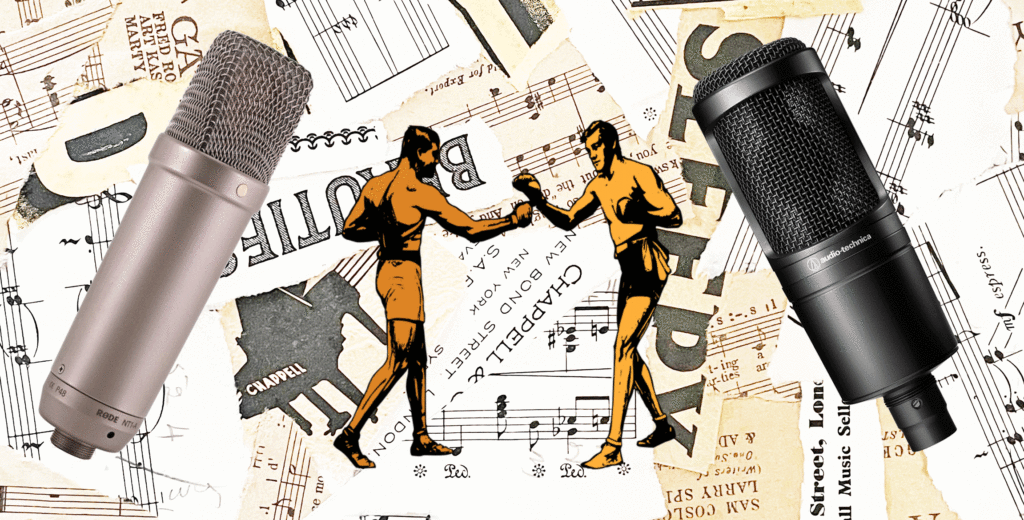
Another popular microphone in the budget home studio market is the Rode NT1-A. This is another cardioid condenser with a reputation for clear and authentic sound at an affordable price.
On paper, both this and the AT2020 have similar specs. They both have a straightforward design without any filters and pads, and they both have the same impedance and frequency response. The NT1-A is a little more sensitive than the AT2020, but the AT2020 has a higher SPL (144db vs 137db for the Rode).
One notable difference is that whilst the AT2020 has quite a high self-noise of 20dB, Rode claim that the NT1-A is one of the quietest studio microphones in the world with a low self-noise of just 5dB. As well as shipping with a shock mount, the NT1-A also has an internal suspension mount which holds the cartridge in place. Both of these will help eliminate stand noise and vibrations.
Although both microphones have quite a similar sound, there are some subtle differences. The NT1-A has a slight boost in the low mids at around 100-200Hz, where the AT2020 dips a little. I find this gives the NT1-A a warmer and rounded low end response when compared to the AT2020. To my ears, the high end tends towards the smooth and controlled in the NT1-A, whereas the AT2020 was a little more pronounced in the high mids, with a subtle fizziness at the top.
It’s certainly not easy to decide between two such similar microphones. My personal preference is for the slightly warmer, smoother sound of the NT1-A. However, it retails at around twice the price of the AT2020. So if I was on a tight budget, I’d choose the AT2020.
What else do you need?
The Audio Technica AT2020 only comes with a stand-mount, so you might have to spend a bit more money later on if you want some accessories.
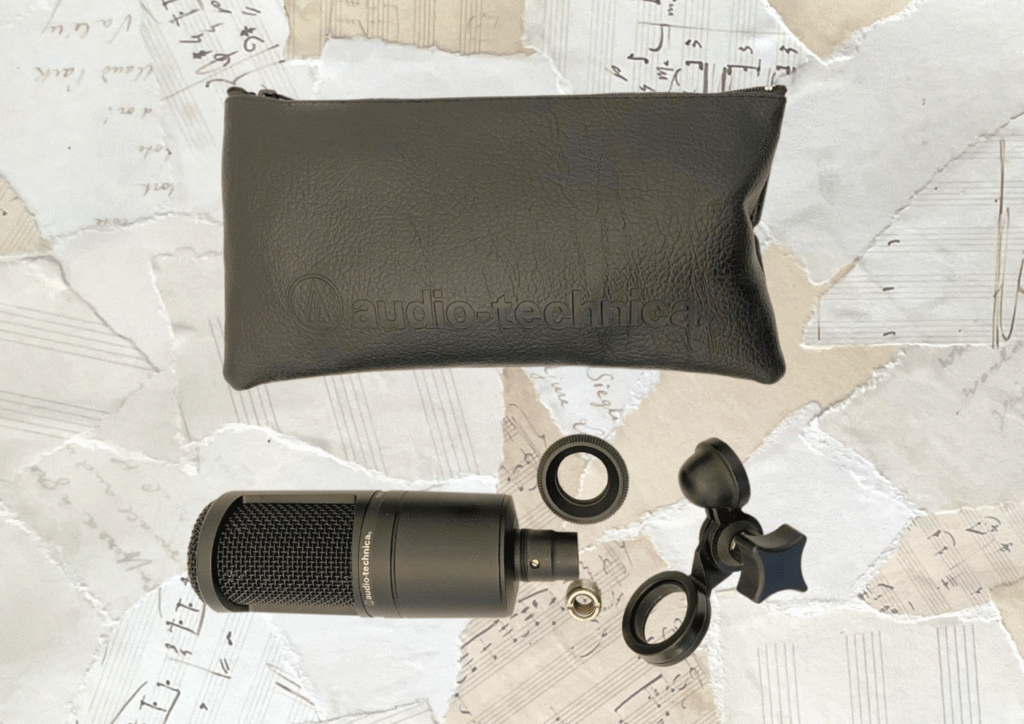
Extra parts to consider:
- Shock mount
You may want to invest in an external shock-mount – it’s not imperative if you’re on a budget, but will help eliminate any stand noise or vibrations getting into your recordings. There’s a reasonably priced one here.
- Pop filter
A pop filter is a ‘must have’ if you’re recording vocals, to avoid plosives – those short bursts of air which can add ruin a recording. You can make one yourself out of an old pair of tights, or easily pick up an inexpensive one.
- Microphone stand
Studio condenser mics like the AT2020 have to be mounted on a stand, to reduce any handling noise. Try a good quality boom stand, with a tripod base like the K&M 210/2
- XLR cable
If you’re investing in condenser microphones for your studio, start getting into the habit of using good quality cables. That way, when you add more high quality mics, you can use the same cables. If you want the best quality XLR cables, try these. Go for the shorter lengths where possible.
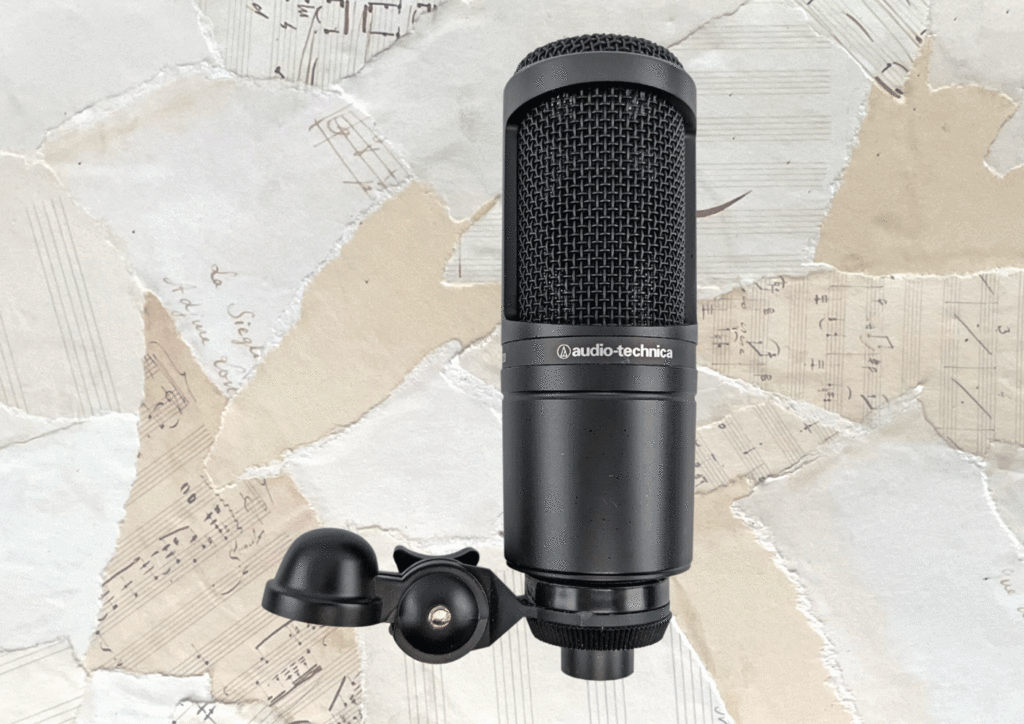
Conclusion
For a budget microphone aimed at the home studio market, the Audio Technica AT2020 performs impressively well. Offering a clear and detailed sound with a bright tone, it will suit a range of vocals and instruments. For those at the beginning of their home recording journey, the Audio Technica AT2020 is a solid proposition, and more than capable of producing professional results.
AT2020 Frequently Asked Questions
Does the AT2020 need phantom power?
The Audio Technica AT2020 is a condenser microphone, so it does require phantom power. You can receive power from the mixing desk, audio interface or a stand-alone unit
Can you use condenser mics on stage?
Condenser mics are a great choice for stage use as long as they have been designed specifically for live use. They’ll deliver a higher quality sound than dynamic mics.
Which artists use the AT2020?
Artists seen using the AKG C214 include Billie Eilish, Finneas and Andrew Huang.
Read about our pick of the best mics for recording vocals
